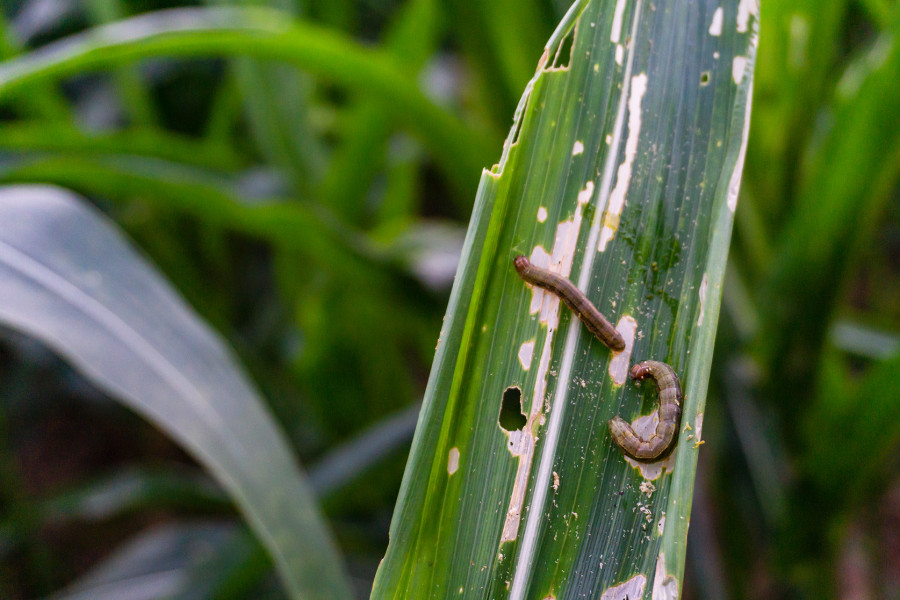Money
Fall armyworm ravages cornfields at an alarming rate in central plains
The nonnative insect was spotted for the first time in May in Gaidakot of Nawalparasi.
Shankar Achayra
The spread of fall armyworm in the districts of central Tarai has been increasing at an alarming rate, prompting agriculture experts to issue warnings that if the pest is left unattended, it will lead to a massive loss in agricultural output.
According to Keshav Prasad Shrestha, director of Regional Agricultural Research Station, reports of farm invasion by the insect is coming in from different regions of districts of Parsa, Bara, Rautahat and Sarlahi among others.
“Cornfields in six regions in central Tarai have been infested by the fall armyworm and we are receiving information that it has spread in other regions in a short period,” said Shrestha. “We managed to control the spread in cornfields in the centre (Parwanipur) but this invasive pest can destroy previously uninfected fields in a night.”
Another official, Ramchandra Yadav, chief of Agriculture Knowledge Centre in Parsa also warned that the cornfields in the northwestern part of Parsa are under threat of invasion by the pest.
“Although Parsa has relatively fewer cornfields than Bara, the pest has ravaged crops in Jitpur, Bara and with Birgunj just west of Jitpur, there is a high threat of infestation.”
The fall armyworm, an insect native to tropical and subtropical regions of the American continent was spotted for the first time in May in Gaidakot of Nawalparasi. The nocturnal pest lays on both sides of maize leaves and its larvae feed quickly on crops.
According to Ghanashyam Bhandari, pest expert and agricultural scientist at National Maize Research Centre, the fall armyworm poses a big challenge to Nepal’s agricultural sector with the pest able to fly over distances ranging from 1500 to 2000 kilometres in its lifecycle.
“The insect has spread in over 40 countries in Africa in just a year starting 2016 and has destroyed agricultural output worth $6.8 billion till date,” said Bhandari. “It can destroy around 8o kinds of food crops including paddy, wheat and maize.”
Fall armyworm can reproduce 12 times a year with each of its egg basket containing clusters of up to 250 eggs and a female worm can lay up to 2000 eggs.
“The best way to curb the spread is to collect and destroy its eggs,” said Bhandari.
A majority of farmers who sow corn in the western and northern part of Sarlahi district are also facing similar problems.
According to local farmers, the pest has already infected over 100 bighas of land in the district this harvest season.




 13.12°C Kathmandu
13.12°C Kathmandu















